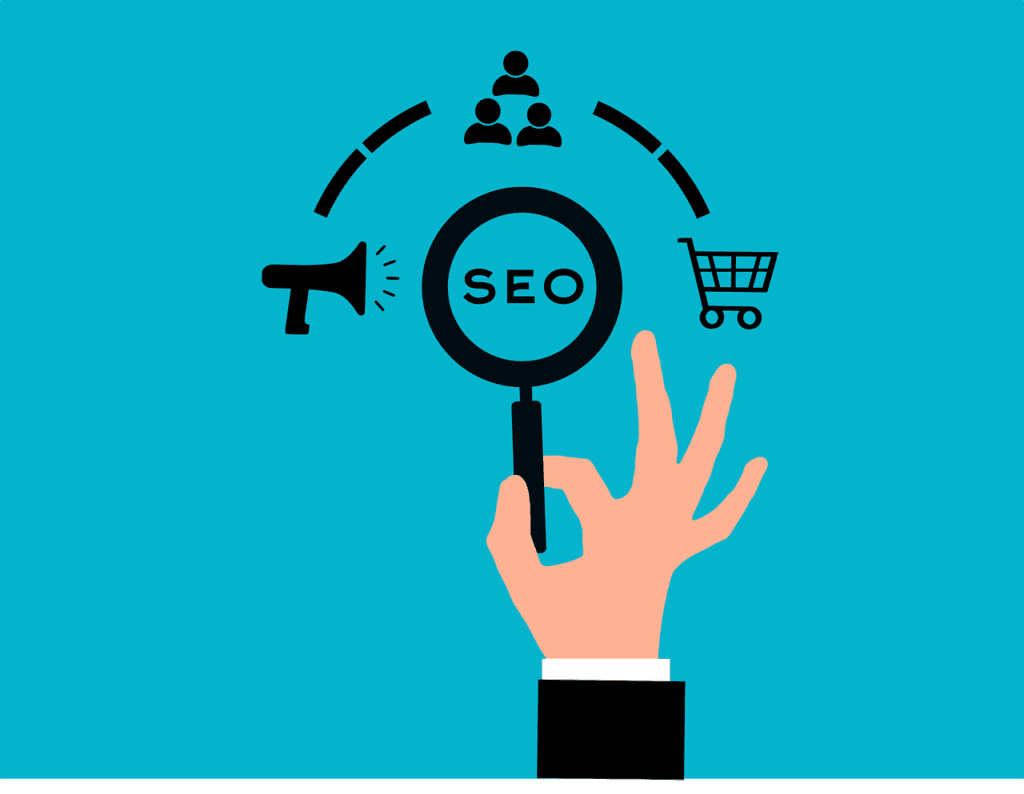In today’s competitive job market, attracting top talent requires more than a job posting—it calls for a powerful, well-defined employer brand. Just as companies use branding to attract customers, they must also brand themselves as attractive workplaces to attract and retain employees. But building a strong employer brand isn’t solely the responsibility of HR. By collaborating with marketing, HR can create a consistent, compelling narrative about what it’s like to work at the company, reaching a broader audience and strengthening the brand’s appeal to potential hires.
When HR and marketing work together, they bring the best of both worlds: HR’s deep understanding of employee needs and workplace culture, and marketing’s storytelling skills and expertise in creating engaging content. In this article, we’ll explore the benefits of HR and marketing collaboration for employer branding and provide actionable steps to help companies build a compelling, authentic employer brand that attracts and retains top talent.
Why HR and Marketing Need to Align for Stronger Employer Branding
Employer branding is about more than posting job descriptions. It’s about telling a story of what makes your company unique, why people love working there, and how it aligns with employees’ values and goals. While HR has insights into employee needs, satisfaction, and the internal culture, marketing knows how to effectively communicate these messages to the outside world.
When HR and marketing align their efforts, they can:
- Create a consistent brand message that reflects the company’s culture and values.
- Increase the reach of employer branding efforts through targeted campaigns.
- Build trust and authenticity by showing a transparent, honest view of the workplace.
With a unified approach, companies can attract candidates who align with their culture and values, reduce turnover, and foster a sense of pride among current employees.
Step 1: Define a Clear Employer Value Proposition (EVP)
An Employer Value Proposition, or EVP, is the foundation of a strong employer brand. The EVP outlines what your company offers to employees in exchange for their talents and commitment. It includes everything from career development opportunities and workplace culture to the company’s mission and values.
Collaborate to Build an Authentic EVP
HR and marketing should collaborate to create an EVP that resonates both internally and externally. HR can gather insights from employee feedback, surveys, and exit interviews to understand what employees value most about working at the company. Marketing can help package these insights into a cohesive message that’s easy to understand and share.
For instance, if employees consistently highlight professional growth and work-life balance, the EVP should emphasize these aspects. Marketing can use storytelling techniques to make the EVP engaging, using real-life examples that illustrate these benefits. By working together, HR and marketing create an EVP that feels authentic and accurately represents the employee experience.
Communicate the EVP Across Channels
Once the EVP is defined, ensure it’s communicated consistently across all channels, from the company website and social media to job postings and internal communications. Marketing can help HR develop a content strategy that ensures the EVP reaches potential candidates wherever they are, and in a way that feels genuine.
For example, if the EVP emphasizes a culture of innovation, include stories or testimonials from employees who have led successful projects. A consistent, clear EVP helps potential candidates understand what the company stands for and what it offers, making it easier for them to see if they’re a good fit.
Step 2: Use Employee Stories to Humanize the Brand

People connect with stories, especially those that are authentic and relatable. Employee stories provide a behind-the-scenes look at the company culture, showing candidates what it’s like to work there from a real employee perspective. These stories are powerful tools for building trust and humanizing the brand.
Gather Stories That Reflect Company Values and Culture
Work with employees to gather stories that reflect the company’s values and culture. HR can identify employees who are willing to share their experiences, while marketing can help craft these stories in a compelling way. Focus on diverse perspectives to show the range of experiences within the company.
For example, you might feature an employee who started in an entry-level role and advanced to a leadership position, illustrating growth opportunities within the company. Another story could highlight a team that worked together to achieve a major milestone, showcasing the collaborative culture. These real-life stories bring the brand to life and help potential hires imagine themselves in similar roles.
Share Stories Across Social Media and Company Platforms
Once the stories are ready, share them widely across social media, the company website, and recruitment platforms. Marketing can use visual elements, such as photos or short videos, to make the stories more engaging and help them reach a wider audience.
For instance, a series of “Day in the Life” posts on Instagram or LinkedIn can give candidates an inside look at different roles within the company. Each post can highlight a unique aspect of the culture, from team-building activities to employee support programs. Sharing these stories consistently helps build a strong employer brand that resonates with candidates.
Step 3: Showcase Workplace Culture through Visual Content
In the age of social media, visual content is a powerful way to showcase your workplace culture. Photos, videos, and even virtual tours can give candidates a glimpse into the daily life at your company, helping them feel connected to the brand before they even apply.
Use Photos and Videos to Highlight the Employee Experience
Marketing can work with HR to create photos and videos that capture the essence of the workplace culture. This might include footage of team events, office spaces, or interviews with employees. The goal is to show the authentic side of the company and let candidates see what it’s like to work there.
For example, a video highlighting a recent team-building retreat can show the camaraderie and collaborative spirit within the company. Or, a photo series that captures a day at the office can convey the work environment and team dynamics. These visuals provide an emotional connection, making the employer brand feel real and inviting.
Leverage Social Media for Real-Time Culture Insights
Social media platforms are ideal for sharing snapshots of your company culture in real time. Marketing can manage a dedicated “behind-the-scenes” series on social media where employees post about their daily activities, team gatherings, or even simple moments like lunch breaks.
For example, Instagram Stories can feature employees sharing quick updates about their projects, celebrating wins, or engaging in office traditions. This real-time content creates an authentic, relatable employer brand that reflects everyday experiences, building trust and attracting candidates who value transparency.
Step 4: Align Recruitment Campaigns with Brand Messaging

To attract top talent, recruitment campaigns should align closely with the company’s brand messaging. HR can work with marketing to create campaigns that convey the company’s values, work environment, and benefits in a way that stands out to potential candidates.
Create Recruitment Content that Speaks Directly to Candidates’ Needs
HR can provide insights into what candidates are looking for—such as growth opportunities, flexibility, or work-life balance—and marketing can incorporate these elements into recruitment content. This ensures that the messaging addresses candidate priorities, making the job postings and recruitment campaigns more compelling.
For example, if data shows that candidates are increasingly interested in remote work, marketing can emphasize the company’s remote-friendly policies in job ads and on the careers page. This alignment between HR and marketing helps attract candidates whose values align with the company’s offerings.
Use Targeted Ads to Reach the Right Candidates
Marketing can assist HR by running targeted ads on platforms like LinkedIn, Facebook, and job boards. These ads can highlight the company’s EVP, open roles, and employee stories, reaching candidates who are likely to be a good fit. Targeted ads increase the reach of employer branding efforts and attract candidates who resonate with the brand message.
For instance, a series of LinkedIn ads could showcase different aspects of the company culture, from flexible work options to career advancement programs. Each ad can speak to a specific candidate need, making it more likely to capture the attention of qualified candidates.
Step 5: Build a Positive Reputation with Employee Advocacy
Employees are some of the most powerful advocates for an employer brand. When employees share their positive experiences, it reinforces the company’s credibility and attracts candidates who trust employee voices more than traditional advertising.
Encourage Employees to Share Their Experiences
HR and marketing can work together to create an employee advocacy program that encourages employees to share their experiences on social media, job review sites, or in referral programs. Provide employees with easy-to-share content, such as pre-written social media posts or templates that highlight the company culture.
For example, encourage employees to share milestones, accomplishments, or “why I love working here” posts on LinkedIn. Marketing can support this by creating branded hashtags or social templates that employees can personalize. These posts amplify the employer brand and attract candidates who connect with the authentic voices of current employees.
Showcase Employee Testimonials on the Careers Page
Include employee testimonials on the company’s careers page to create a welcoming, authentic experience for potential hires. HR can work with marketing to gather testimonials from employees at different levels and departments, showcasing a variety of perspectives.
For instance, testimonials from new hires can provide insights into the onboarding experience, while testimonials from long-term employees can highlight growth and development opportunities. These testimonials add credibility and help potential candidates envision their own career path within the company.

Related: Check out our free tools:

Step 6: Engage Current Employees to Strengthen the Brand from Within
An employer brand isn’t just about attracting new hires—it’s also about retaining and engaging current employees. When employees feel valued, supported, and aligned with the company’s values, they become ambassadors for the brand, creating a positive reputation that resonates both internally and externally.
Conduct Regular Employee Surveys to Understand Satisfaction
Regular employee surveys give HR insights into what’s working well and what can be improved within the company culture. Marketing can help HR turn survey results into positive messaging that shows the company’s commitment to continuous improvement.
For example, if a survey reveals high satisfaction with career growth opportunities, marketing can use this data to highlight development programs on the careers page. This transparency shows potential hires that the company listens to its employees and values their feedback.
Recognize and Celebrate Employee Contributions
Celebrate employee achievements to foster a positive workplace culture that reflects the values of the employer brand. Marketing can help by sharing these stories on social media, in newsletters, or on the company website, reinforcing the brand’s commitment to employee recognition and success.
For instance, feature a monthly “Employee Spotlight” that highlights individual accomplishments, team projects, or community involvement. Recognizing employees publicly not only boosts morale but also shows potential hires that the company values its people.
Step 7: Measure and Adjust the Employer Branding Strategy

Building a strong employer brand is an ongoing process, and it’s essential to measure the effectiveness of your efforts. By tracking key metrics, HR and marketing can understand what resonates with candidates, identify areas for improvement, and refine their approach over time.
Track Key Employer Branding Metrics
Identify metrics that reflect the impact of employer branding efforts, such as application rates, employee referrals, engagement on social media posts, and ratings on job review sites. Regularly reviewing these metrics helps both teams see what’s working and where adjustments may be needed.
For example, if application rates increase after launching an employee story campaign, it’s a sign that storytelling resonates with potential hires. This data allows HR and marketing to double down on what works and adjust any messaging or channels that aren’t performing as expected.
Use Feedback to Continuously Improve
Just as with any marketing campaign, feedback from candidates, new hires, and current employees provides valuable insights. Use this feedback to continuously improve the employer brand, from refining the EVP to enhancing onboarding processes. HR and marketing should view the employer branding strategy as a living, evolving effort.
For instance, if new hires mention that certain job expectations were unclear during the recruitment process, HR and marketing can work together to clarify messaging in job postings and onboarding materials. Regular feedback loops ensure the employer brand stays relevant, authentic, and aligned with the needs of both employees and candidates.
Step 8: Foster a Culture of Transparency and Authenticity
A strong employer brand is built on transparency and authenticity. Candidates today are savvy—they can easily detect when a brand’s message doesn’t match the actual employee experience. To create an employer brand that attracts and retains talent, HR and marketing must work together to ensure that messaging is always honest, transparent, and reflective of the company’s true culture.
Promote an Open Dialogue Between Leadership and Employees
Encourage open communication across the organization by facilitating regular discussions between leadership and employees. Marketing can help HR by promoting town hall meetings, Q&A sessions, or “Ask Me Anything” (AMA) events, where employees can engage directly with company leaders. These sessions give employees a voice and demonstrate that the company values transparency.
For example, if leadership holds a quarterly town hall to discuss company goals and employee concerns, marketing can help by live-streaming the event or sharing key takeaways on social media. This openness builds trust internally and shows potential hires that the company is committed to a culture of honesty and inclusion.
Embrace Constructive Employee Feedback
Encouraging and acting on employee feedback is another way to build a transparent employer brand. HR can work with marketing to show how employee feedback shapes company policies, benefits, or workplace initiatives. By sharing these improvements publicly, the company demonstrates that it values employees’ opinions and is committed to ongoing growth.
For instance, if employees suggest more flexibility in remote work policies, and the company adopts this feedback, marketing can highlight this change in recruitment materials. This transparency helps reinforce a brand image that values and listens to its people, which appeals to candidates looking for a supportive workplace.
Step 9: Develop a Consistent Employee Experience from Recruitment to Retention

An effective employer brand doesn’t end once a candidate is hired. To build a brand that truly resonates, HR and marketing must ensure that the employee experience aligns with the promises made during recruitment. A consistent employee journey strengthens retention and turns employees into long-term advocates for the brand.
Design a Welcoming Onboarding Experience
The onboarding process is a critical moment in shaping the employee’s perception of the company. HR and marketing can work together to create an onboarding experience that’s engaging, informative, and reflective of the company culture. Marketing can help design welcome materials, such as an introductory video or a branded welcome kit, that give new hires an immediate sense of belonging.
For example, a “Welcome to the Team” video that includes greetings from leadership and peers can make new hires feel valued from day one. A well-designed onboarding process leaves a positive first impression, helping new hires feel more confident and motivated in their roles.
Create Ongoing Engagement Programs for Current Employees
To keep employees engaged and aligned with the employer brand, HR and marketing can develop programs that reinforce company values and culture. These might include professional development workshops, wellness programs, or team-building activities. Marketing can help promote these initiatives internally, ensuring that employees are aware of and excited about participating.
For instance, if the company values learning and growth, HR and marketing could collaborate on a “Growth Fridays” program where employees can attend skill-building sessions or engage in knowledge-sharing workshops. Engaging employees in meaningful ways enhances the employee experience and reinforces the authenticity of the employer brand.
Step 10: Turn Employees into Brand Ambassadors
Employees who are proud of their workplace become natural ambassadors for the employer brand. HR and marketing can encourage employees to share their positive experiences with their networks, creating a ripple effect that strengthens the brand’s visibility and appeal.
Launch an Employee Advocacy Program
HR and marketing can establish an employee advocacy program that makes it easy for employees to share positive stories, job openings, or company news on social media. Provide employees with pre-written posts or branded visuals to make sharing simple and engaging. When employees share content, it reaches a wider network and carries more authenticity than traditional advertising.
For example, if an employee shares a post about a recent team-building event or a project they’re proud of, it gives their connections a genuine glimpse into the company culture. This peer-to-peer endorsement can significantly impact recruitment, as candidates tend to trust the opinions of current employees.
Recognize and Reward Brand Ambassadors
Recognizing employees who actively support the employer brand helps reinforce a culture of advocacy. HR and marketing can implement recognition programs where employees who share content or participate in brand-related initiatives are acknowledged publicly or given rewards.
For instance, an “Employee Advocate of the Month” award can celebrate employees who go above and beyond in promoting the company’s culture and values. This recognition encourages others to participate, creating a supportive environment where employees feel motivated to represent the brand positively.
Building a Resilient and Attractive Employer Brand
Aligning HR and marketing for employer branding is a powerful way to attract and retain top talent in today’s competitive job market. When these two teams collaborate, they create a cohesive, engaging, and authentic employer brand that resonates with candidates and reflects the true employee experience.
By defining a clear EVP, sharing employee stories, leveraging visual content, and aligning recruitment campaigns, HR and marketing can build a brand that stands out. This collaboration fosters transparency, celebrates the workplace culture, and showcases the company as a supportive, growth-oriented employer.
As the employer brand strengthens, the benefits become clear: a stronger talent pipeline, lower turnover, and a more engaged, satisfied workforce. With a united approach to employer branding, companies can create a workplace that attracts the best talent and builds a positive, lasting reputation.
Begin building your employer brand today by fostering collaboration between HR and marketing, focusing on authenticity, and continually refining your approach based on employee and candidate feedback. A strong employer brand doesn’t just attract talent—it creates a workplace where employees are proud to work and thrive.
READ NEXT:
- Are Vanity Metrics Killing Your Marketing Efficiency? Here’s What to Track Instead
- Pinpointing Digital Marketing ROI: Why Your Metrics Aren’t Telling the Full Story
- Unlocking Real ROI in Digital Marketing: The Hidden Costs Draining Your Budget
- How Misaligned Marketing Funnels Are Blocking Your ROI Potential
- Best Digital Marketing Agency In Santa Ana, California
- Best Digital Marketing Agency In San Francisco, California





















